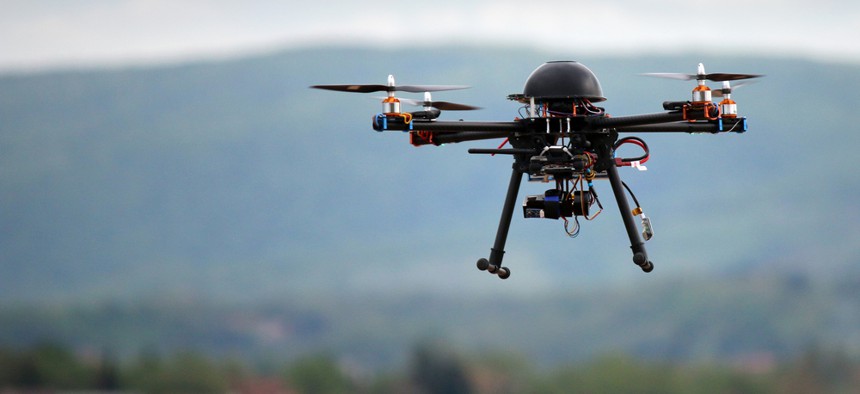Inventive Ways Local Governments Are Increasingly Using Aerial Drones

risteski goce / Shutterstock.com
From economic development to hazardous materials response, unmanned aircraft is giving agencies a new tech boost.
It’s certainly not uncommon for local governments to post promotional videos to YouTube to tout new programs, highlight events or feature interviews with public officials or department employees (in one community, they even use puppets as interviewers ).
In Johnston County, North Carolina, near Raleigh, drones have been added to the mix to promote economic development.
“It’s all about trying to stay cutting edge and make our stuff stand out a little bit more than who we traditionally compete with,” Chris Johnson, the director of Johnston County Economic Development told The Clayton News Star .
The county’s economic development office worked with a local videographer to create seven flyover videos of vacant but “site ready” buildings to help attract new businesses or developers to the county. And using a drone aircraft is certainly cheaper than a helicopter—all in all, the videos cost the county roughly $2,000.
The videographer, Ken Best, told the newspaper that he uses “common-sense rules” with his drone-enabled video footage and that he wouldn’t have any problems with complying with a proposed set Federal Aviation Administration guidelines to govern commercial drone use, which would limit such activities to altitudes under 500 feet.
It’s the latest example of how the drone revolution has been building within local governments.
Late last year in South Texas, two hazardous materials teams were assisted by aerial drone technology when responding to an incident at an abandoned hospital in the city of Pharr, near the U.S.-Mexico border.
According to The Monitor newspaper in McAllen:
The real-time imagery allowed firefighters to map the area and quickly set up a plan of action, said Jason Arms, the city’s innovation and technology director.
“This truck allows us to take technology into the field. It’s equipped with satellite communications, radio communications and computers,” Arms said. “Police, fire and public works can use it—it’s like our own on-wheels geek squad.”
In Massachusetts, the local fire department in Plymouth used video footage from two drones to survey damage from one of the recent winter storms that slammed New England.
“It saved us man hours, huge number of man hours, at a time when we didn't have them to spare and rough conditions with snow up to waist deep,” Plymouth Fire Chief Edward Bradley told WCVB-TV .
The proposed FAA rules on commercial drones could officially open the door for expanded use of drone aircraft in local government operations.
According to PublicCEO.com :
Despite the nominal focus on commercial drones, the proposed rules are also likely to lead to a huge expansion in drone use by government agencies, such as police and fire departments. Currently, agencies must go through a burdensome application process to receive FAA approval to operate drones, a decision made on a case-by-case basis. The new regulations propose lifting many of these obstacles to allow government agencies to fly their own drones or hire contractors to do so. The requirements will be more akin to commercial use, which will require operators to take a written test, but will no longer require that they hold a valid pilot’s license.
While local governments may be embracing the use of drones for their operations, they might be wary about how they’re being used by hobbyists or others for non-official or commercial purposes.
One New York City councilmember wants to ban the use of aerial drones in the city outside of law enforcement because of safety concerns. “We’re trying to protect New Yorkers and set up some reasonable rules in advance of their proliferation,” Councilmember Dan Garodnick said, according to the Daily News .
New York City is not alone figuring out how to regulate drone use.
As USA Today wrote on Monday , “[a]cross the country, state and local governments are grappling with a confusing array of questions about how to deal with drones, which hold great potential to help society as well as untested privacy and security risks.”
NEXT STORY: Alaska Becomes the First Red State to Go Green






